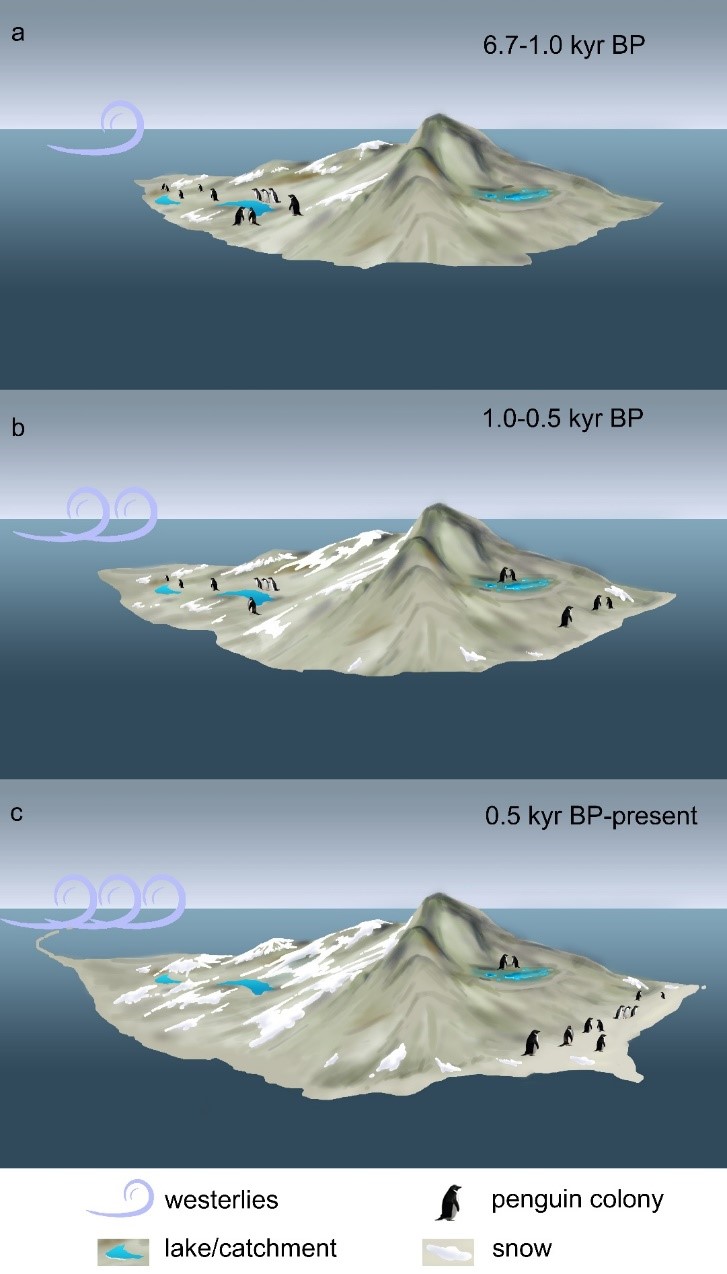The research team led by Prof. XIE Zhouqing and Prof. SUN Liguang of University of Science and Technology of China, found that the distribution of island topography, wind, and snow under the influence of large-scale climate models was crucial to the rise and fall of penguin populations and habitat evolution. The research results were published in Quaternary Science Reviews, with the title of Enhancedwesterlies drove Penguin movement at 1000yr BP on Ardley Island, West Antarctic Peninsula.
This study illustrates the relationship between the migration and quantitative changes of penguin habitats and topography, westerly wind intensity and Southern Annular Model (SAM). It provides a new perspective for the study of atmospheric circulation and Palaeoecology in the historical period. It also provides a scientific basis for assessing the possible impacts of future climate change on penguin habitats, and for the planning of Penguin ecological security and ecological protection areas.
Ardley Island is an important breeding area for Jintu penguins on the Antarctic continent. SUN Liguang and other scholars have carried out research on the island since 2000. By analyzing the typomorphic elements of penguin dung in the sediments, they found the changes of penguin population in the past three thousand years. But there is a question that bothers them: why did penguins migrate to the east when they had lived in the western part of the island for a long time in history?

Changes of penguin settlements and westerly wind intensity in Ardley Island in the past thousands of years (Image from the paper)
To figure out this question, they comprehensively analyzed the research on Ardley Island by scholars at home and abroad in the past 20 years, and recently reconstructed the distribution and quantity changes of penguins in different historical periods of the island. The results indicated that the penguin colonies in the western part of the island began to abandon gradually from about 1000 years ago, while the penguin colonies in the eastern part of the island began about 900 years ago, and the number of penguins has increased continuously in the past 500 years.
They found that the eastward migration of penguins on the island was related to the strengthening of the westerly zone in the southern hemisphere and the change of the Antarctic ring pattern, which led to changes in the local environment. The western part of the island was more windswept and snowpacked, so the penguins gradually moved to a shelter east of the Ardley watershed.
The first author of this paper is YANG Lianjiao, a postdoctoral student of the School of Earth and Space Sciences, co-authored by Prof. SUN Liguang and Prof. XIE Zhouqing. The research work was supported by the Ministry of Science and Technology's key research and development, the special project of comprehensive investigation and assessment of the Antarctic and Antarctic environment, and the project of International Polar cooperation.
(Written by LIU Ziyu, edited by SHI Xiao, USTC News Center)